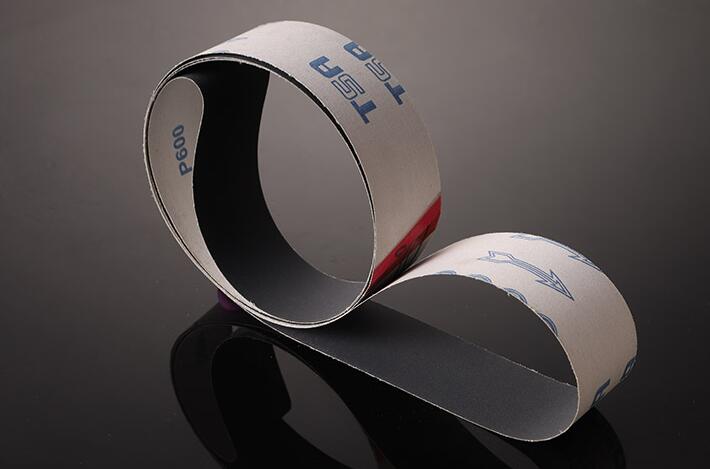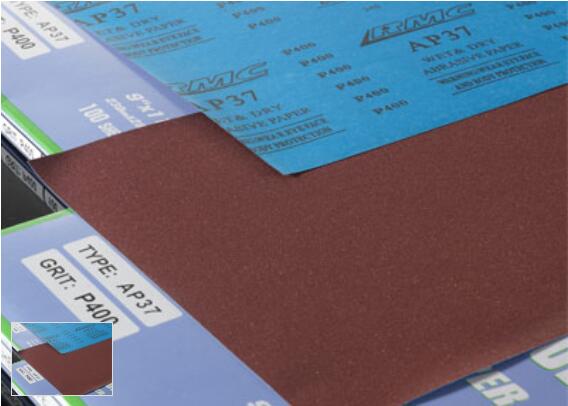Choosing the ideal type of sandpaper/abrasive depends on the material you are using it on and the finish you want. When comparing silicon carbide and aluminium oxide (alumina), they do have some differences, but both are popular choices for metalwork and sanding wood surfaces due to their level of performance, lower price and versatility.
If you weren't an earth science enthusiast in high school, you may not be aware of the differences between these abrasive tools. As one of the proficient wholesale abrasive suppliers, we have compared the two options and presented their best applications below to help you make an informed decision for your next project.

Basically, an abrasive grain is a sharp and hard material used to wear away another material when in contact with an applied pressure. One of the most commonly used abrasive products is sandpaper, often made by manufacturers using silicon carbide (SiC) or aluminium oxide (Al2O3). These are the two most common types of abrasives. They account for nearly 90% of all domestic abrasive grit.
Other common abrasive materials include zirconium oxide alumina, cubic boron nitride, synthetic diamond, ceramic alumina, garnet, emery, quartz, silica sand and saffron. Many of these abrasive grains mentioned are used in the manufacture of other types of abrasive products, such as grinding wheels, flap discs, flap wheels and abrasive belts.
The grains that form sandpaper grit need to be sharp in shape and have high hardness values in order to become abrasives. You will often find that they are assigned a grit number to describe their particle size. The grit number will detail the number of small holes per inch in the screen through which the grain passes. The values range from No. 4 to No. 2500, with grain sizes ranging from a few millimetres to two microns.
To determine the type of abrasive on the product, the labels for solidified abrasives and grinding wheels have a code that will tell you the composition. The symbol for aluminium oxide is A and for silicon carbide C. You can find this symbol in the first position from the left, followed by the characteristics of the particular abrasive, such as grit size and sometimes other special characteristics.
Choosing the right sandpaper/abrasive can reduce the time consuming sanding/grinding process by smoothing the surface faster. You can use specific abrasives, techniques and pressures depending on the material to improve the surface finish. The correct abrasive will reduce friction and heat, allowing you to preserve the abrasive for longer and avoid burning the material.
Aluminium oxide sandpaper is the most widely used grain as it is very effective on most metals, wood and painted surfaces. The material is durable and cheaper to produce than most alternatives.
Aluminium oxide abrasives do come in different colours. You can find brown, white and pink aluminium oxide, with brown being the most common.
White and pink will wear faster, but they produce a smoother surface. These two types of alumina are the most abundant compared to silicon carbide. You can find white alumina in coarse to fine textures. It works best on wood and lacquer because it produces less heat. You can also use white particles between the finishes on the wood. Pink aluminium oxide has a rough, fine texture and you can use it on softer woods.
Brown aluminium oxide lasts longer because its particles break down much more slowly than the pink and white varieties. You can find it in micro grit textures and it will sand high hardness materials such as metal, plasterboard, fibreglass, wood and painted surfaces. Although the surface finish does not look as smooth as pink or white, you can grind your objects more economically and quickly with brown aluminium oxide.
You can find friable, semi-friable, normal and heavy duty aluminium oxides. When used, the friable grit does not dull, but breaks to re-sharpen, constantly revealing sharp edges. The coarser grit removes the raw metal by allowing the particles to re-sharpen in this way, while the smaller particles polish the metal surface.
Brown aluminium oxide is semi-brittle. The grains will break and re-sharpen, but they take more time to break. The benefit of this is a longer lasting abrasive.
If you are using an aluminium oxide abrasive belt, you will find open, closed and flexible closed coatings. Open coatings are most suitable for soft metals and wood because of their 60% - 65% grain coverage.
Closed coatings cover 90% - 95% of the belt surface, making these coatings most suitable for hard non-ferrous and ferrous metals. Finally, the flexible closed-coat abrasive belts are suitable for concave and curved surfaces on harder woods and metals.
You should only use aluminium oxide sanding belts for dry operations. If you intend to use metal grinding wheels, you can use aluminium oxide on materials with high tensile strength, such as stainless steel and high tensile bronze and aluminium alloys.

Silicon carbide sandpaper is the hardest and sharpest common abrasive, but lacks durability due to its brittleness. In addition, narrow grain sizes wear faster. These grains are so sharp that they can sand metal, marble, glass, stone, cork, MDF and plastic with minimal pressure. However, they are difficult to polish harder metals and woods.
Silicon carbide is suitable for rough surfaces and polishing. It is more brittle than aluminium oxide and you can use it in wet grinding operations. You can polish parts in automotive applications, remove rust, refinish wooden floors, remove metal burrs, smooth sand between glass edges and finish coatings.
Most people use silicon carbide sandpaper in combination with aluminium oxide. One will use the aluminium oxide abrasive for rough grinding and then finish the project with silicon carbide. This way you can produce a smooth surface finish without wearing down the sandpaper.
You can find both friable (green) and normal (black) silicon carbide, with the friable being purer and harder but more brittle than the normal variety.
Black silicon carbide can grind non-ferrous metals, ceramics and hard non-metals, while the green option is best suited for polishing purposes. However, silicon carbide is not recommended for grinding steel.
Silicon carbide sandpaper belt is suitable for harder materials such as wood finishes, stone, metal and paint, as well as softer materials such as rubber, glass and plastic. After repeated use, the grains can become slightly cracked (fragile) and are therefore not suitable for soft woods as they do not make sharp edges. These belts have a closed coating with optimum particle coverage so you can apply the particles to hard materials or finish the surface with a sealer or varnish.
Grinding and sanding wheels are suitable for materials such as cast iron, aluminium and carbide. If your project involves non-metallic or low tensile strength materials, you will need to use silicon carbide rather than aluminium oxide.
The best sandpaper for metals depends on the material composition of the metal, but aluminium oxide usually works very well. Although silicon carbide can handle many hard and soft metals, it does not perform well on steel or stainless steel. Aluminium oxide can effectively abrade steel surfaces, but it may not produce the smoothest of finishes.
Ceramic alumina and zirconium oxide alumina do a better job than aluminium oxide when polishing steel. They produce less friction and are more durable, but cost more. However, budget-friendly alumina can handle softer steel alloys. In the battle between silicon carbide and alumina, neither stainless steel, nor ceramics or zirconium can be polished, but alumina is a cost-effective way to do a small job.
Actually, both. The best abrasives for aluminium grinding are usually made from a special formulation of alumina and silicon carbide. Many of these mixed abrasive products have additional lubricants added to them. The goal is to grind aluminium without generating too much heat, which could damage this soft metal. The combination of the two abrasives and the lubricant prevents the abrasive from loading and building up too much heat, which can melt soft metals such as aluminium.